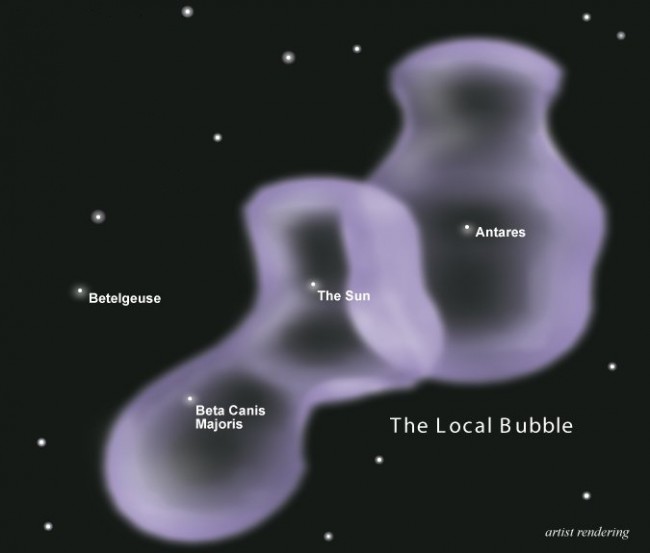Scientists have confirmed that the soft X-ray glow permeating the sky has two sources: one inside the solar system, one outside.
For over a decade, astronomers have debated the source of a soft X-ray glow that permeates the sky. Some thought the solar wind might be responsible, while others suspected an enormous bubble of hot gas. But a recent study published in Nature might finally settle the dispute: both sources are required to produce the X-ray background.
This X-ray background is an unexpectedly intense glow of soft X-rays blanketing the sky. X-rays at these low energies are easily absorbed by interstellar clouds, so astronomers concluded that they must have a local origin (within a few hundred light-years of the Sun). Moreover, observations show that there is a suspicious lack of cool, absorbing gas within about 300 light-years of the Sun.
So scientists proposed the existence of “the local hot bubble” to explain the X-ray background. The local hot bubble is a cavity in the interstellar medium filled with hot, X-ray-emitting gas. Astronomers suspect that a nearby supernova explosion carved the bubble out hundreds of thousands or millions of years ago, leaving a region filled with relatively little neutral hydrogen but a lot of million-degree gas. This bubble spans hundreds of light-years, encasing the Sun and many nearby stars.
But the local bubble paradigm was challenged when astronomers observed X-rays emanating from a comet as it passed through the solar wind, explains Robin Shelton (University of Georgia). After this discovery, astronomers began to wonder whether the X-ray background might be produced by the ionized particles in the solar wind interacting with other solar system material.

